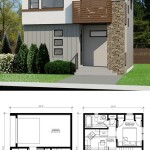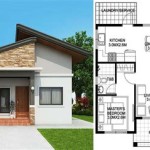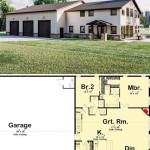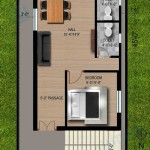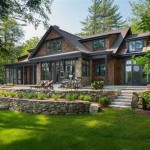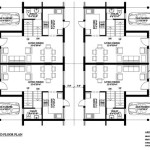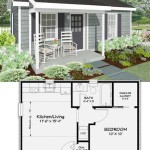Best Three-Bedroom House Plans for 2024: Design Trends and Practical Considerations
The demand for three-bedroom house plans remains consistently high across diverse demographics and geographical locations. This enduring popularity stems from the versatility offered by this configuration, catering effectively to small families, couples desiring extra space for hobbies or guests, and individuals seeking a manageable yet comfortable living environment. Examining the best three-bedroom house plans for 2024 requires a nuanced understanding of current design trends, practical space utilization, and adaptability to evolving lifestyle needs. This analysis will delve into several popular and functional layouts, highlighting their key features and benefits, while considering aspects like cost-effectiveness and potential for future expansion.
When searching for the ideal three-bedroom house plan, several factors warrant careful consideration. Budgetary constraints invariably play a significant role, influencing material choices, overall square footage, and the complexity of the architectural design. Site characteristics, including lot size, topography, and local building codes, also dictate the feasibility of certain layouts. Furthermore, a homeowner's lifestyle and long-term aspirations should be integrated into the planning process. A family with young children, for example, may prioritize open-concept living spaces and proximity of bedrooms, while empty-nesters might favor single-story designs with enhanced accessibility features. The following sections will elaborate on exemplary three-bedroom house plans, offering detailed insights into their respective advantages.
Open-Concept Living with Master Suite Retreat
One widely favored design approach involves an open-concept living area encompassing the kitchen, dining room, and living room. This layout promotes a sense of spaciousness and encourages social interaction. The kitchen typically features a functional island that serves as both a preparation area and an informal dining space. Thoughtfully positioned windows maximize natural light penetration, enhancing the ambiance of the communal areas. The master suite, often situated at one end of the house, provides a private retreat, incorporating a walk-in closet and an en-suite bathroom equipped with modern amenities such as dual sinks and a separate shower and bathtub. This design prioritizes the comfort and privacy of the homeowners.
The remaining two bedrooms are usually located on the opposite side of the house, sharing a common bathroom. This separation of sleeping quarters creates a degree of privacy for both the master suite occupants and other family members or guests. Depending on the overall square footage, the additional bedrooms can serve as versatile spaces, readily adaptable as children's rooms, guest rooms, home offices, or hobby areas. Adequate storage solutions, such as built-in closets and shelving units, are essential in maximizing the utility of these rooms.
Exterior design elements can significantly contribute to the overall appeal of this type of house plan. Modern elements such as clean lines, large windows, and minimalist landscaping can create a contemporary aesthetic. Alternatively, incorporating traditional features like a covered porch, dormer windows, and clapboard siding can evoke a more classic and inviting character. The choice of exterior materials and finishes should complement the surrounding environment and reflect the homeowner's personal preferences.
Ranch-Style Simplicity and Accessibility
Ranch-style homes, characterized by their single-story design and horizontal layout, remain a popular choice, particularly among older adults and individuals with mobility limitations. These homes offer ease of navigation and eliminate the need for stairs, making them inherently accessible. A well-designed three-bedroom ranch-style house plan can provide ample living space while maintaining a compact footprint. The floor plan typically incorporates an open-concept living area, a well-appointed kitchen, and three comfortable bedrooms.
Within a ranch-style layout, the positioning of the bedrooms can vary. One common arrangement places the master suite at one end of the house and the two additional bedrooms at the opposite end, mirroring the layout seen in the open-concept designs. Another configuration clusters all three bedrooms together, providing greater proximity and convenience for families with young children. The choice depends on the specific needs and preferences of the homeowners. Universal design principles, such as wider doorways, grab bars in bathrooms, and lever-style door handles, can be easily incorporated into ranch-style homes to further enhance accessibility.
The exterior architecture of ranch-style homes is often characterized by low-pitched roofs, expansive windows, and attached garages. Landscaping typically focuses on creating a seamless transition between the interior and exterior spaces, with patios, decks, and well-maintained gardens. The simplicity of the ranch-style design makes it relatively cost-effective to build and maintain, making it an attractive option for budget-conscious homeowners.
Split-Level Design for Enhanced Privacy and Functionality
Split-level house plans offer a unique approach to space utilization, dividing the living area into different levels connected by short flights of stairs. This design provides a degree of separation between functional zones, enhancing privacy and minimizing noise transmission. A typical split-level three-bedroom house plan might feature the main living area, including the kitchen, dining room, and living room, on one level; the bedrooms on an upper level; and a recreation room or family room on a lower level. This vertical separation can be particularly appealing to families with teenagers or individuals who work from home, as it creates distinct spaces for different activities.
The placement of the bedrooms in a split-level design is typically on the uppermost level, ensuring a quiet and private sleeping environment. The master suite often includes a dedicated bathroom and walk-in closet, while the remaining two bedrooms share a common bathroom. The lower level can be customized to suit the homeowner's needs, serving as a home office, a media room, a gym, or even an additional guest suite. A split-level design can effectively utilize sloping lots, minimizing excavation costs and maximizing usable living space.
Aesthetically, split-level homes can be designed to reflect a range of architectural styles, from mid-century modern to contemporary. Exterior features often include multi-level facades, large windows, and cantilevered elements. Landscaping plays a crucial role in integrating the house into the surrounding environment, softening the angular lines and creating a welcoming entrance. While split-level designs may require more careful planning due to their complex layout, they offer a versatile and functional living space that can adapt to evolving lifestyle needs.
Cost-Effective Design Considerations
Regardless of the chosen layout, cost-effectiveness remains a primary concern for most homeowners. Several strategies can be employed to minimize construction costs without compromising the quality and functionality of the house. Simplifying the roof design, opting for standard window sizes, and using readily available building materials can significantly reduce expenses. Open-concept layouts typically require fewer interior walls, further contributing to cost savings. Efficient insulation and energy-efficient appliances can also lead to long-term cost reductions by lowering utility bills.
Another cost-saving measure involves carefully planning the plumbing and electrical systems. Minimizing the distance between bathrooms and the main water supply can reduce plumbing costs. Similarly, strategically positioning electrical outlets and light fixtures can minimize the need for extensive wiring. Engaging with a qualified architect or designer early in the planning process can help identify potential cost-saving opportunities and ensure that the house plan aligns with the homeowner's budget.
Furthermore, the selection of interior finishes and fixtures can have a substantial impact on the overall cost of the house. Opting for durable and low-maintenance materials, such as laminate flooring and quartz countertops, can provide a cost-effective alternative to more expensive options like hardwood flooring and granite countertops. Prioritizing functionality over luxury and focusing on essential features can help maintain a reasonable budget without sacrificing comfort and quality. The key to cost-effective design lies in careful planning, informed decision-making, and a willingness to compromise on non-essential features.

3 Bedroom House Plan Stylish Home Designs And Budgets In 2025

3 Bedroom House Plan Stylish Home Designs And Budgets In 2025

3 Bedroom House Plan Stylish Home Designs And Budgets In 2025

3 Bedroom House Plan Stylish Home Designs And Budgets In 2025

3 Bedroom House Plan Stylish Home Designs And Budgets In 2025

3 Bedroom House Plan Stylish Home Designs And Budgets In 2025

The Best Small Bedside Tables In 2024

Where Is The Celebrity Big Brother 2025 House Irish Sun

The 13 Best Kids Furniture S To In 2024

14 Best Couches Under 300 For 2024 Tested And Reviewed
Related Posts

